Beginners Guide to Yoga: Where to Start?
Yoga, an ancient practice that has stood the test of time, continues to captivate and inspire individuals around the world.
This ancient practice offers a multitude of physical, mental, and spiritual benefits. Whether you’re looking to improve your flexibility, reduce stress, or embark on a journey of self-discovery, yoga can be a transformative experience.
However, if you’re new to yoga, it can feel overwhelming to know where to begin. This beginners guide to yoga will provide you with the essential information you need to get started on your yoga journey.

This post may contain affiliate links, which helps keep this content free. Please read our disclosure for more info.
Understand the Basics:
The practice of yoga has evolved over time, giving rise to various styles and approaches that cater to different needs and preferences.
One of the most well-known and accessible styles for beginners is Hatha yoga. Hatha, which means “forceful” or “sun” in Sanskrit, focuses on the physical aspect of yoga, incorporating asanas (poses) and pranayama (breathing exercises).
Hatha yoga is an excellent starting point for beginners as it provides a solid foundation and introduces the fundamental principles of yoga.
In Hatha classes, practitioners learn to cultivate balance, strength, flexibility, and body awareness through a series of postures and breathwork.
This style often involves holding poses for longer durations, allowing individuals to deepen their understanding of proper alignment and develop strength gradually.
While Hatha yoga primarily emphasizes the physical aspect, it also introduces basic breathing techniques and simple meditation practices. The integration of breath control and mindfulness cultivates a deeper connection between the body and mind, promoting relaxation, focus, and inner calm.
Hatha yoga classes are usually accessible to practitioners of all fitness levels and body types, offering modifications and variations to suit individual needs.
By starting with Hatha yoga, beginners can develop a solid understanding of proper alignment, breathing techniques, and body awareness.
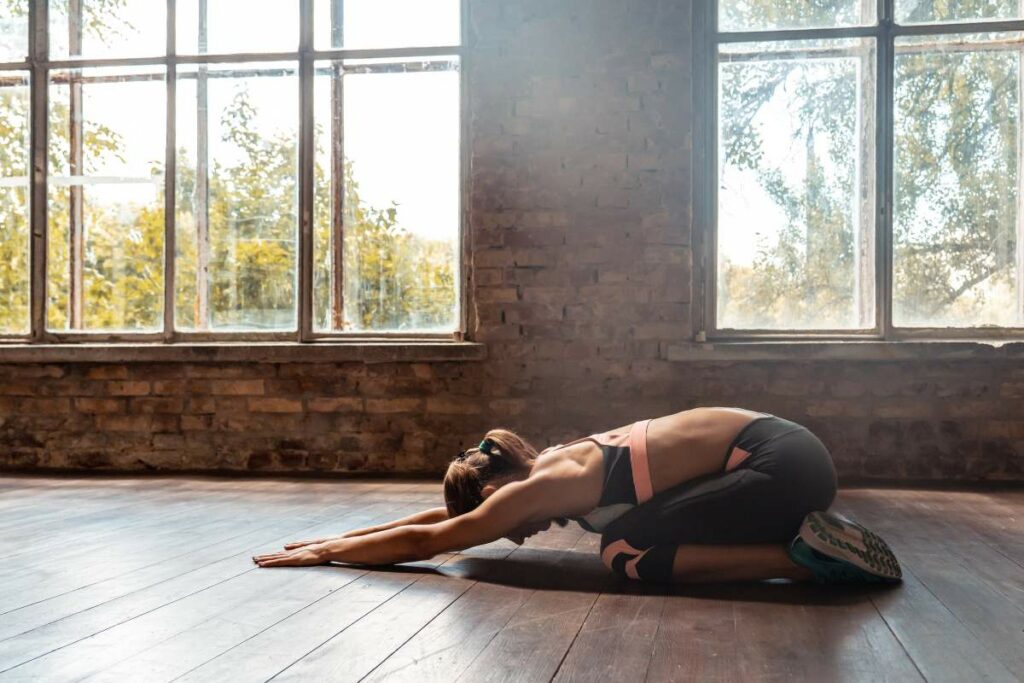
This style serves as a stepping stone for exploring other yoga styles and deepening one’s practice. It lays the groundwork for building strength, flexibility, and overall well-being while fostering a mindful and introspective approach to yoga.
As you delve into the world of yoga, keep in mind that it is a personal journey of self-discovery and growth.
Each individual’s experience with yoga is unique, and it’s essential to approach the practice with an open mind, patience, and self-compassion.
Whether you choose to continue with Hatha yoga or explore other styles, remember that the true essence of yoga lies in the integration of mind, body, and spirit, and the journey is as important as the destination.
Find the Right Style:
There are numerous styles of yoga to choose from, each offering its own unique benefits and focus. Some popular styles include Hatha, Vinyasa, Ashtanga, Iyengar, and Bikram.
Hatha
Hatha yoga is a gentle and slower-paced style that focuses on the physical postures (asanas) and breath control (pranayama).
It is an excellent choice for beginners as it provides a solid foundation and introduces the fundamental poses.
Hatha classes typically involve holding poses for longer durations, allowing practitioners to explore proper alignment and build strength and flexibility.
This style emphasizes balance, relaxation, and mindfulness, making it suitable for those seeking a more meditative and introspective approach to yoga.
Vinyasa:
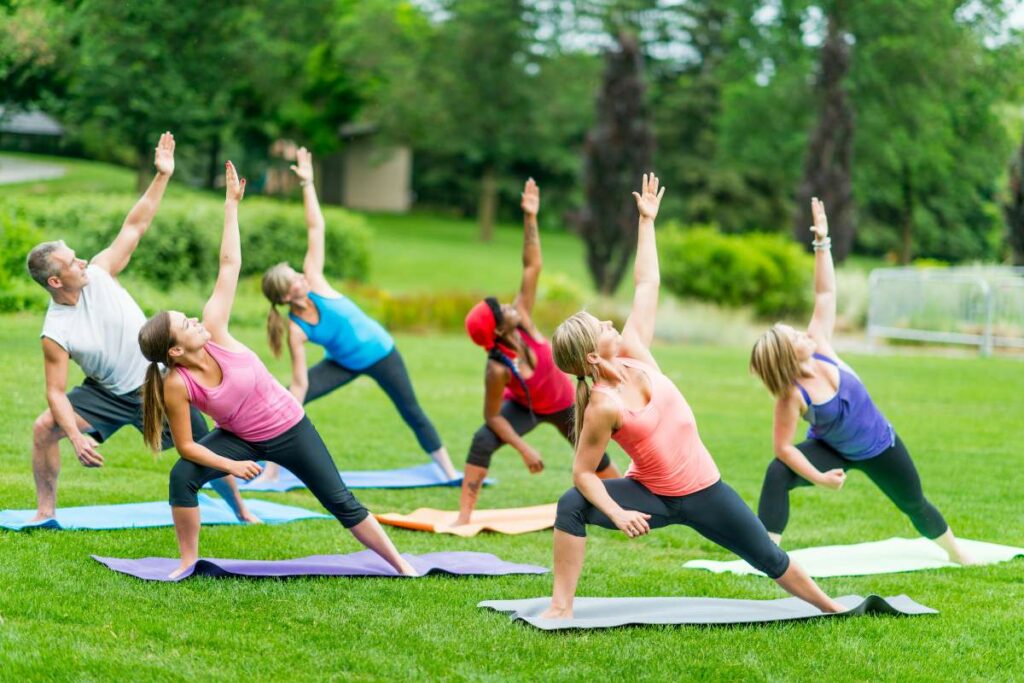
Vinyasa yoga is a dynamic and fluid style characterized by its synchronized movement and breath.
It involves linking breath with a continuous flow of poses, creating a seamless and energetic practice.
Vinyasa classes often vary in pace, intensity, and sequencing, as each instructor has the freedom to design their sequences creatively.
This style builds strength, stamina, and flexibility while promoting a sense of mindfulness and presence.
Vinyasa yoga offers a great cardiovascular workout while cultivating a meditative state through the rhythmic flow of breath and movement.
Ashtanga:
Ashtanga yoga is a vigorous and structured style that follows a specific sequence of poses. It is a physically demanding practice that involves a series of flowing movements combined with synchronized breath (called vinyasas).
Ashtanga classes are typically led in a guided or Mysore-style format. In a guided class, the instructor leads the students through the sequence, whereas in a Mysore-style class, practitioners progress at their own pace under the guidance of the instructor.
Ashtanga yoga builds strength, endurance, and flexibility, making it suitable for those seeking a disciplined and challenging practice.
Iyengar:
Iyengar yoga places a strong emphasis on precise alignment and the use of props to support the practice.
Developed by B.K.S. Iyengar, this style is known for its meticulous attention to detail and therapeutic approach. Iyengar classes focus on holding poses for longer durations, allowing practitioners to explore proper alignment and experience the benefits of each pose fully.
Props such as blocks, straps, and bolsters are used to assist in achieving optimal alignment and make poses accessible to practitioners of all levels and abilities.
Iyengar yoga is beneficial for those recovering from injuries or with specific physical limitations, as it offers a safe and supportive practice.
Bikram:
Bikram yoga, also known as hot yoga, is a practice performed in a heated room (typically around 105°F or 40°C) with high humidity.
Created by Bikram Choudhury, this style consists of a series of 26 poses and two breathing exercises practiced in the same sequence in every class. The heat is believed to promote detoxification, increase flexibility, and enhance cardiovascular endurance.
Bikram classes follow a specific script, and the heat intensifies the physical challenge of the practice. However, it’s important to note that Bikram yoga has faced controversy and legal issues related to its founder, and alternative hot yoga styles are available that offer a similar experience without the association to Bikram Choudhury.
Each of these yoga styles offers its own unique approach and benefits, so it’s worth exploring and trying different styles to see which resonates with you the most.
Remember that finding the right style is a personal preference, and the most important aspect is finding a practice that aligns with your needs, goals, and overall well-being.
Start with a Beginner-Friendly Class:
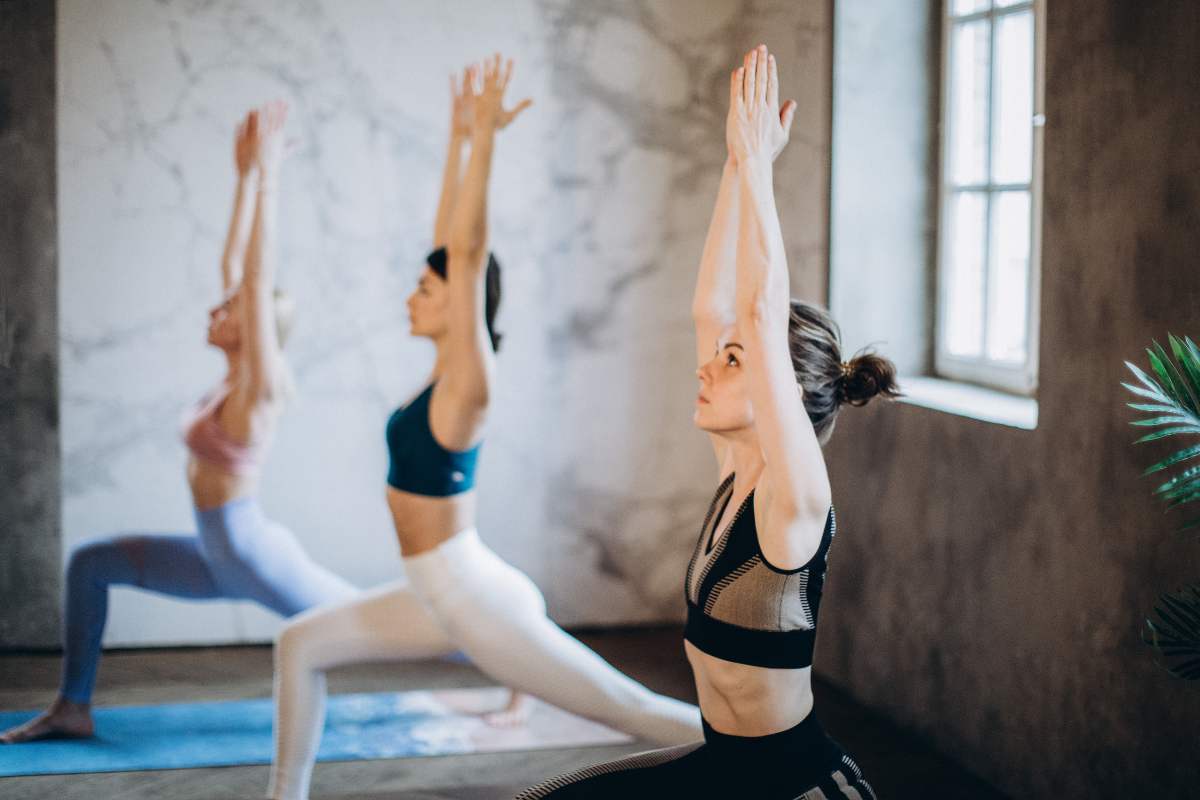
Attending a yoga class with a qualified instructor is highly recommended for beginners. Look for studios or community centers that offer beginner-friendly classes or specifically cater to newcomers.
These classes often focus on foundational poses, alignment principles, and provide modifications for different abilities.
The instructor can guide you through the postures, correct your alignment, and offer personalized guidance.
Invest in Proper Gear:
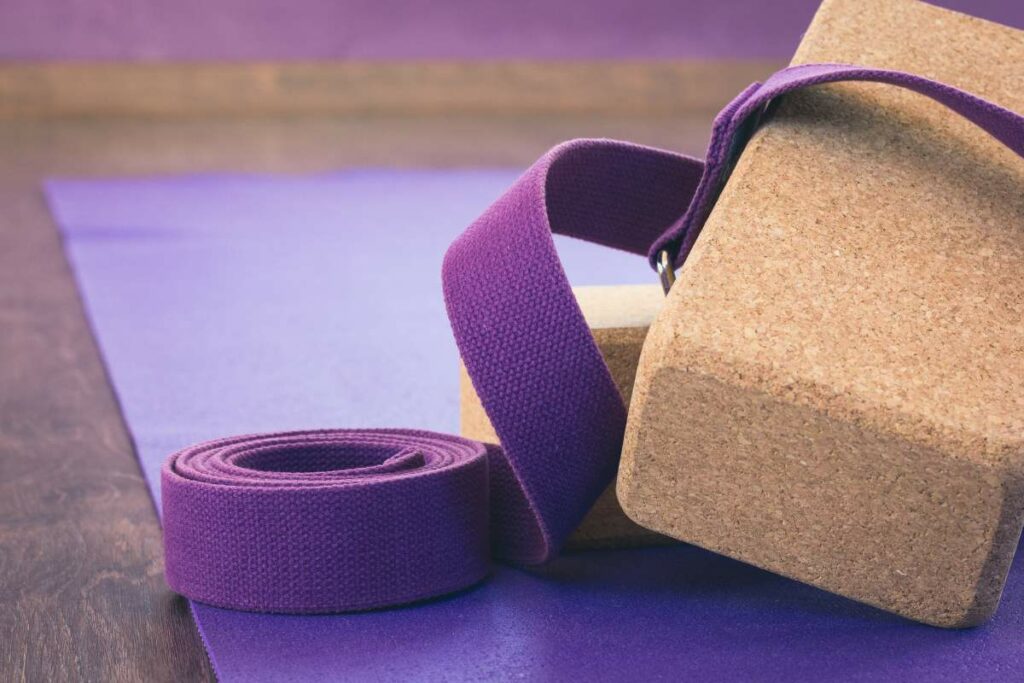
First and foremost, a good-quality yoga mat is essential. Look for a mat that provides adequate cushioning to protect your joints and offers a reliable grip to prevent slips and injuries.
The right mat can offer stability and support during standing poses and provide a comfortable surface for seated and lying postures.
Consider the thickness, material, and texture of the mat to find one that suits your preferences and needs.
In addition to a mat, wearing comfortable clothing is crucial for unrestricted movement. Opt for clothing that allows you to stretch, bend, and twist without any hindrance.
Avoid overly tight or baggy clothes that can limit your range of motion or distract you during practice.
Choose breathable fabrics that wick away moisture to keep you comfortable and focused throughout your session.
As you progress in your yoga journey, you may find that certain props can assist you in achieving proper alignment and making challenging poses more accessible.
Blocks, for example, can be used to bring the floor closer to your hands or provide stability and support in balancing poses.

Straps can help you reach deeper into stretches by extending your reach and providing leverage.

Bolsters, blankets, and cushions offer support and relaxation during restorative poses and meditation. These props are especially helpful for beginners who may need additional assistance in maintaining proper alignment or finding comfort in certain poses.

Investing in these additional props is not mandatory, especially when starting yoga. However, as you advance and encounter different postures or limitations, having these tools can offer valuable support and deepen your practice.
Many yoga studios and online retailers offer a wide range of props to choose from, allowing you to select those that best suit your needs and preferences.
Remember that while having the right gear can enhance your practice, it’s important not to become overly reliant on it.
The essence of yoga lies in the connection between mind, body, and breath, and these tools are merely aids to facilitate that connection.
As you deepen your practice, you may find that simplicity and minimalism resonate more with you, and you can adjust your gear accordingly.
Ultimately, investing in proper gear is about creating a comfortable and safe space for your yoga practice.
A quality mat, comfortable clothing, and optional props can support your alignment, prevent injuries, and allow you to focus fully on the present moment.
Choose items that align with your individual needs, and don’t be afraid to experiment and find what works best for you.
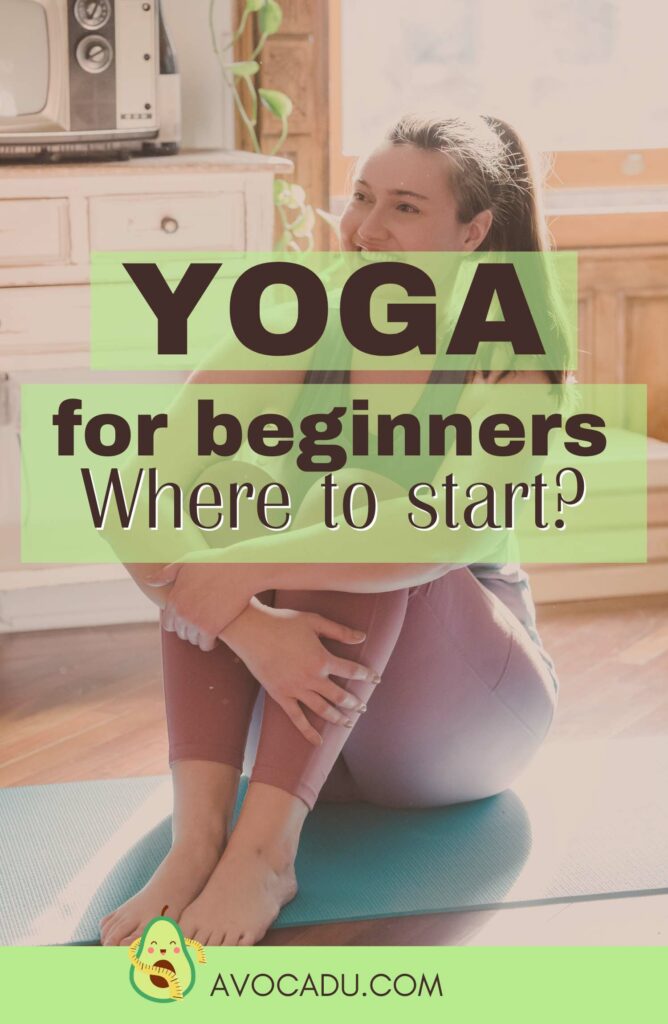
Practice Regularly:
Consistency is key when starting yoga. Aim to practice at least two to three times a week, even if it’s just for 15 minutes initially.
Regular practice allows your body to adapt and build strength, flexibility, and balance.
Yoga is a journey, and progress takes time. Be patient and kind to yourself as you develop a regular routine.
Listen to Your Body:
One of the fundamental principles of yoga is to listen to your body and honor its limitations. Never force yourself into a pose that feels painful or uncomfortable.
Yoga is not a competition; it’s about self-exploration and self-care. Each person’s body is unique, so focus on your own experience rather than comparing yourself to others in the class.
Modify poses as needed and take breaks whenever necessary.
Learn Proper Breathing Techniques:
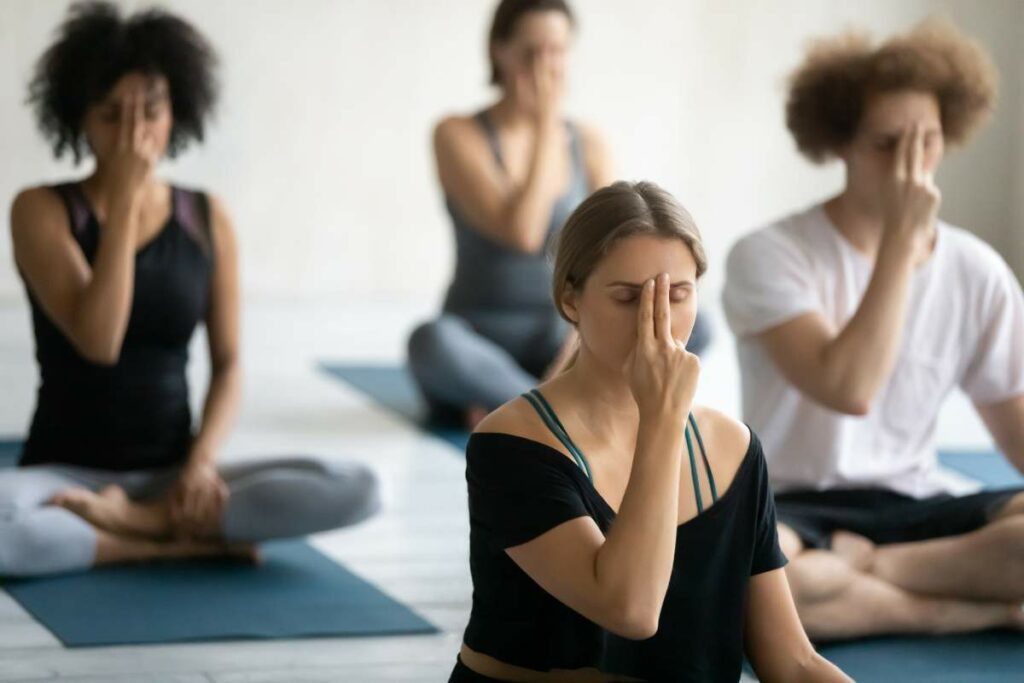
Breath control, or pranayama, plays a crucial role in the practice of yoga. It is a fundamental aspect that connects the body, mind, and breath, allowing for a deeper and more profound experience on the mat.
Learning and incorporating proper breathing techniques can enhance your yoga practice, promote relaxation, and improve overall well-being.
One of the most commonly used breathing techniques in yoga is Ujjayi breath, also known as victorious breath or ocean breath.
Ujjayi breath involves breathing in and out through the nose while gently constricting the back of the throat, creating a soft, whispering sound.
This technique not only helps regulate the breath but also generates internal heat, creating a calming and meditative effect. Ujjayi breath serves as an anchor for the mind, keeping it focused and present during the practice.
In addition to Ujjayi breath, there are various other pranayama techniques that can be explored as you advance in your yoga journey. These include alternate nostril breathing (Nadi Shodhana), deep belly breathing (Dirga Pranayama), and cooling breath (Sheetali Pranayama), among others.
Each technique offers unique benefits, such as balancing energy, calming the nervous system, or cooling the body, and can be incorporated into your practice to enhance specific aspects.
Practicing deep, mindful breathing during your yoga sessions is essential for cultivating awareness and creating a harmonious flow between breath and movement.
As you move through the poses, try to synchronize each movement with the corresponding breath. Inhale to expand and lengthen, and exhale to release and soften. This synchronization not only promotes a graceful and fluid practice but also deepens the mind-body connection.
Beyond the mat, incorporating proper breathing techniques into your daily life can have a profound impact on your overall well-being.
Mindful breathing can help reduce stress, improve focus, and promote a sense of calm and balance. Take moments throughout the day to pause, close your eyes, and take a few deep, intentional breaths.
This practice can be particularly helpful during moments of tension or when you need to ground yourself and find clarity.
Attending specific pranayama classes or workshops can provide guidance and further deepen your understanding of breath control. Additionally, many online resources and apps offer guided pranayama exercises that you can explore at your own pace and convenience.
Remember, breathing is a natural process that we often take for granted. By bringing conscious awareness to our breath and incorporating proper breathing techniques into our yoga practice and daily life, we unlock a powerful tool for self-regulation, relaxation, and overall well-being.
So, take the time to explore and refine your breath, and let it become an integral part of your yoga journey.
Explore Online Resources:

If attending in-person classes is not feasible or if you prefer practicing in the comfort of your own home, there are plenty of online resources available.
Many yoga instructors and platforms offer online classes and tutorials specifically designed for beginners. YouTube is a great starting point for finding guided yoga sessions catering to various levels and styles.
However, ensure that you follow reputable sources to ensure proper instruction and alignment.
Here at Avocadu, we partnered with Kris Moon, Certified Yoga Instructor, Mindfulness Teacher, and YouTuber to create a handful of video yoga practices to go along with one of our signature programs, the Yoga Fat Loss Bible.
Be Mindful of Your Diet and Hydration:
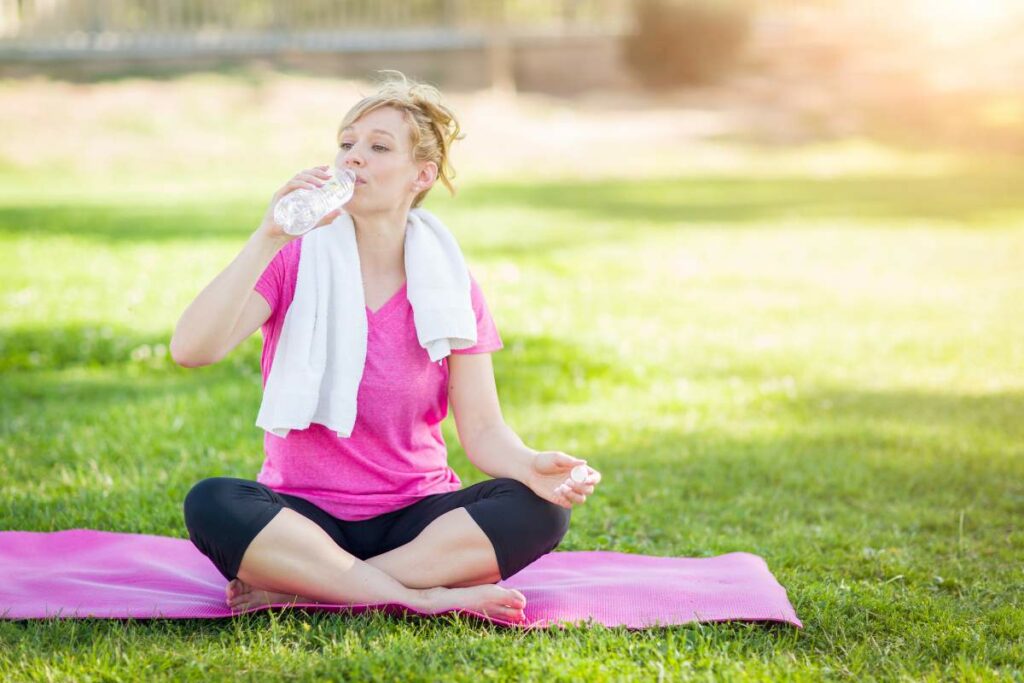
Yoga is not just about the physical practice; it also promotes a balanced lifestyle. Pay attention to your diet and hydration to support your yoga practice.
Stay hydrated by drinking plenty of water before, during, and after your sessions. Eat nourishing foods that provide energy and support muscle recovery.
Incorporating a balanced diet can enhance your overall well-being and amplify the benefits of your yoga practice.
Embrace the Mind-Body Connection:
Yoga is not just about the physical postures; it’s about connecting the mind, body, and breath.
Take time to cultivate mindfulness and bring awareness to your practice. Notice the sensations in your body, observe your thoughts without judgment, and allow yourself to be present on the mat.
Yoga can be a powerful tool for self-reflection and personal growth. Embrace the journey and let it unfold organically.
Embarking on a yoga journey as a beginner can be both exciting and intimidating.
Remember to start with the basics, find a style that resonates with you, and practice regularly with patience and self-compassion.
With time, dedication, and an open mind, yoga can become a transformative and lifelong practice that nurtures your body, mind, and spirit.
So, take that first step, unroll your mat, and let the transformative power of yoga guide you on a beautiful journey of self-discovery.

